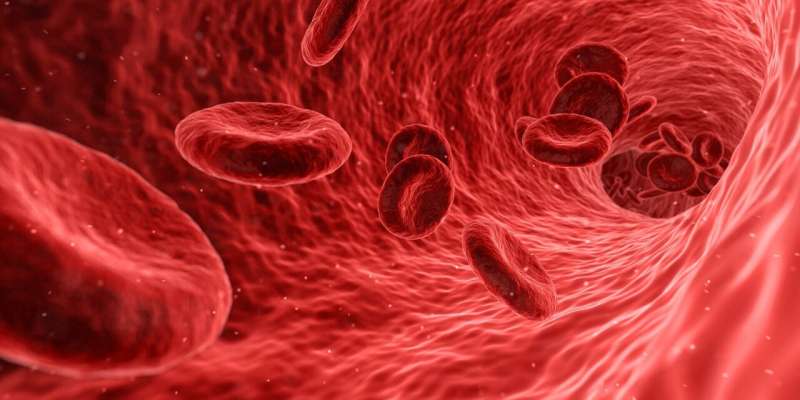New nanoparticle combination therapy shows effective resuscitation for massive hemorrhage

Massive hemorrhage, or excessive bleeding, is a potentially preventable yet a major cause of death in trauma patients.
An immediate and well-balanced transfusion of blood components, such as platelets and red blood cells (RBCs) which, respectively form clots to stop bleeding and deliver oxygen to tissues and organs for proper function, becomes crucial for their survival.
Unfortunately, however, blood products may not always be in stock in case of an emergency, such as when a serious car accident involving many drivers and passengers occurs, because they cannot be preserved for long. For instance, a pack of RBCs can only be stored for 3 weeks at 2-6°C. This becomes only four days at room temperature for a platelet concentrate, and it must be constantly shaken in a shaker.
To act as substitutes for these components, a Japanese research team successfully resuscitated rabbits with coagulopathy, or an impaired ability to form blood clots, from severe hemorrhage shock by using two different nanoparticles; one with hemostatic potential and the other with an oxygen-carrying potential.
Shinji Takeoka of Waseda University said, "Our findings suggest not only that the nanoparticles we developed have excellent preservation property but also that the combination therapy using the hemostatic nanoparticles and the oxygen-carrying nanoparticles are comparable to conventional transfusion."
This study, published in Transfusion, is the first to report a combination therapy using two different types of functional nanoparticles.
"In this experiment, the research team penetrated the liver of rabbits with abnormally low levels of platelets to induce massive hemorrhage and administered the hemostatic nanoparticles developed in a previous study while blocking the bleeding site immediately after injury," Manabu Kinoshita of the National Defense Medical College Japan explains. "After five minutes, clotting was confirmed, and the oxygen-carrying nanoparticles were given to help the rabbits recover from anemia due to blood loss."
As a result, six out of the ten rabbits treated by this new combination therapy survived in comparison to the seven out of ten by conventional transfusion of platelet and RBC concentrates, showing similar hemorrhage control.
Hiromi Sakai of Nara Medical University said, "The hemostatic particles we developed can be stored for about one year at room temperature, with no shaking required. The same goes for oxygen-carrying nanoparticles. Also, the oxygen-carrying nanoparticles do not need any kind of blood typing or cross-match tests."
The team believes that the combination therapy using these nanoparticles will be effective for both in-hospital care and pre-hospital resuscitation.
Additionally, because blood supply is anticipated to decrease in countries with a low birthrate and an aging population such as Japan, the team hopes that the nanoparticles will be used for practical application in the future to save lives of patients who require massive transfusion in emergency trauma care.
More information: Kohsuke Hagisawa et al, Combination therapy using fibrinogen γ-chain peptide-coated, ADP-encapsulated liposomes and hemoglobin vesicles for trauma-induced massive hemorrhage in thrombocytopenic rabbits, Transfusion (2019). DOI: 10.1111/trf.15427

















